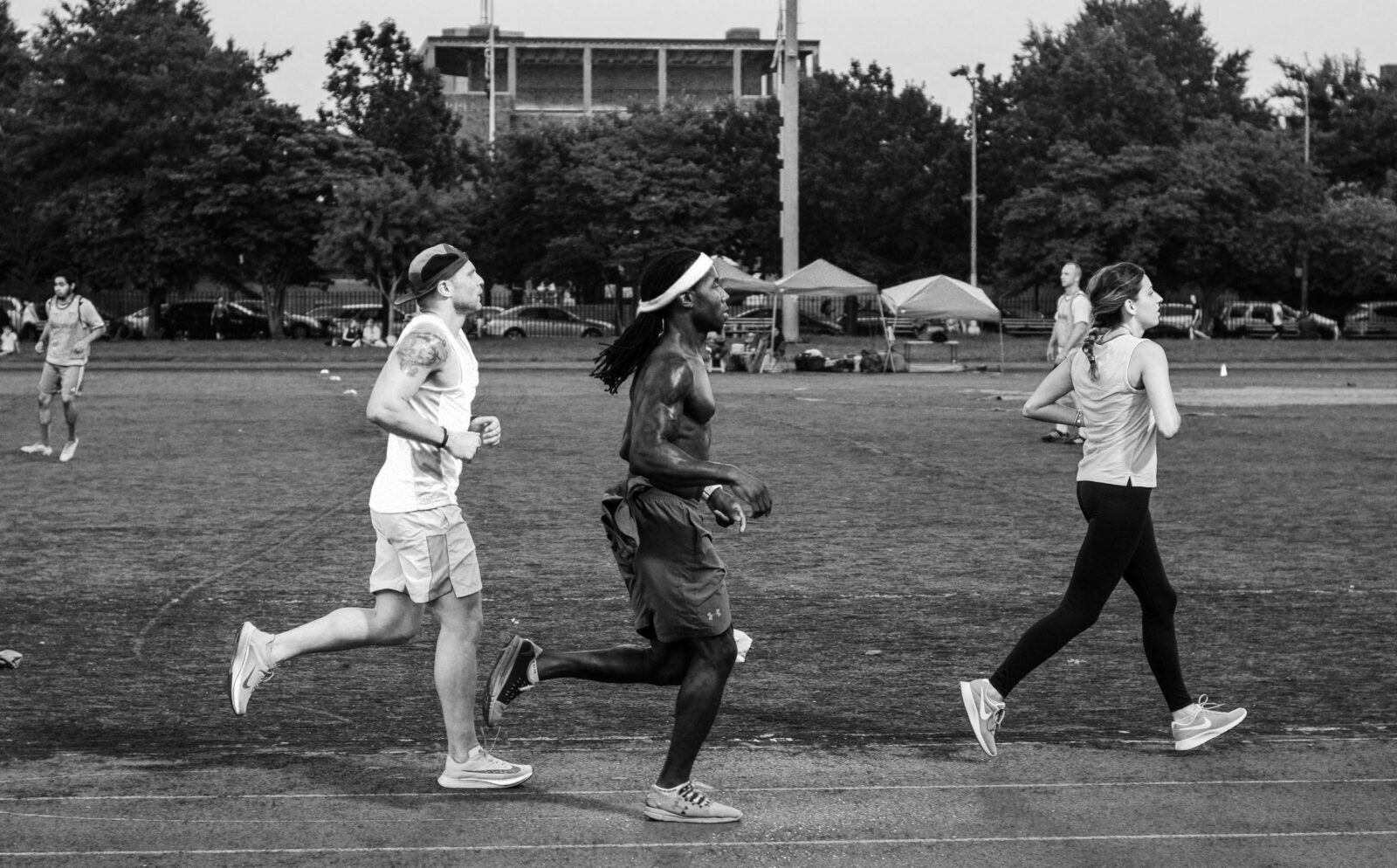by Marnie Kunz
Whether you’re training for a spring race or you just want to become a faster runner, these 3 speed workouts will help you crush your goals. Speed workouts are higher intensity workouts than regular base runs and they train your body to run more efficiently. They also improve your leg speed and mental strength, making you run better in races even when things get challenging.
If you are new to speed training, begin by incorporating one speed workout a week to your running program. If you are an advanced runner or have been doing some speed workouts already, you can do two speed workouts a week. The important thing to remember is to take an easy day or rest day following your speed workout so your body has time to repair and recover.
Fartleks
Fartleks – Swedish for “speed play” – are short bursts of speed that you do between regular paced running. Fartleks are a great way to transition into doing speed workouts and are very adaptable to different training goals and levels. If you’re training for a 5K, for instance, you can do short bursts of 100-meter speed bursts throughout a 3-mile training run. For longer distance races, you may do a run of 4 to 6 miles with 200-meter speed bursts mixed in.
Here is a basic fartleks workout to try:
Fartleks Workout
-
Warm-up: Warm up by running for 10 minutes at a relaxed pace, one at which you could keep up a conversation.
-
Do dynamic stretches.
-
Workout: Run for 3 miles, with 8 short bursts of speed throughout your run. Aim for about 100 meters for the speed bursts. You can do this by sight by picking a pole or landmark in the distance and running fast to it. Or you can measure 100 meters on your watch or on a track (100 meters is one straight part of a lap on a standard outdoor track). For the speed bursts, run at 80% effort level.
-
Cooldown: Run for 10 minutes at a relaxed pace. Stretch.
Intervals
Interval training follows a similar principle as fartleks, with periods of fast running between segments of active recovery with slow jogging. Interval training is a staple speed workout for all runners and can improve your race times for any race distance – from the mile to the marathon.
If you are new to interval running, try this 400-meter speed workout to get started. For advanced runners, add more intervals to the workout.
400-Meter Interval Workout
-
Warm-up: Run for 10 minutes at a relaxed pace, one at which you could keep up a conversation.
-
Do dynamic stretches.
-
Workout: Run for 400 meters at your goal 5K pace. Run 400 meters slowly to recover. Repeat to do a total of 5 fast intervals and 5 recovery laps. If you are running on a standard outdoor track, 400 meters is one lap. If you’re using a GPS running watch, 400 meters is .25, one fourth of a mile.
-
Cooldown: Cool down by running for 10 minutes at a relaxed pace. Stretch.
Tempo Run
Tempo runs offer an awesome speed workout for all race distances, and are especially useful for half marathon and marathon training. In contrast with fartleks and interval workouts, tempo runs are steady state effort runs that you do for a sustained period of time. The tempo run trains your body to run at a faster pace and more efficiently so you are less affected by fatigue when you are racing.
For your tempo run pace, aim for your 10K race pace, or a challenging pace that you would be able to maintain for an hour, about 70% effort level. Tempo runs can range from 20 minutes to an hour, depending on your endurance level and race goals.
Here is a sample tempo run workout to try:
Tempo Run Workout
-
Warm-up: Warm up by running for 10 minutes at a relaxed pace, one at which you could keep up a conversation.
-
Do dynamic stretches.
-
Workout: Run for 25 minutes at your goal 10K pace, about 70% effort level.
-
Cooldown: Run for 10 minutes at a relaxed pace. Stretch.
Adapting Your Speed Workouts
These are some speed workouts that can help you get started with your speed training. You can adapt them to your race goals by adding more time to your runs if you are training for longer races like the half marathon or marathon. If you are doing a tempo run for half marathon training, for instance, run for 45 minutes at your tempo pace. If you’re training for a mile race, on the other hand, stick with short speed workouts like 100-meter fartleks and 400-meter intervals and run at your goal mile pace for the fast segments of the workout.
Don’t forget to schedule recovery time after your speed workouts. If you need help with recovery, check out Custom Performance’s Recovery Services and you’ll be in great hands.
Happy – and speedy – running to you!
Marnie Kunz is a NASM-certified personal trainer, USATF and RRCA-certified running coach and the creator of Runstreet Art Runs. She is a Brooklyn resident and Akita mom. She enjoys sweating, traveling, art, and eating messily. You can follow her at @Runstreet Instagram.

